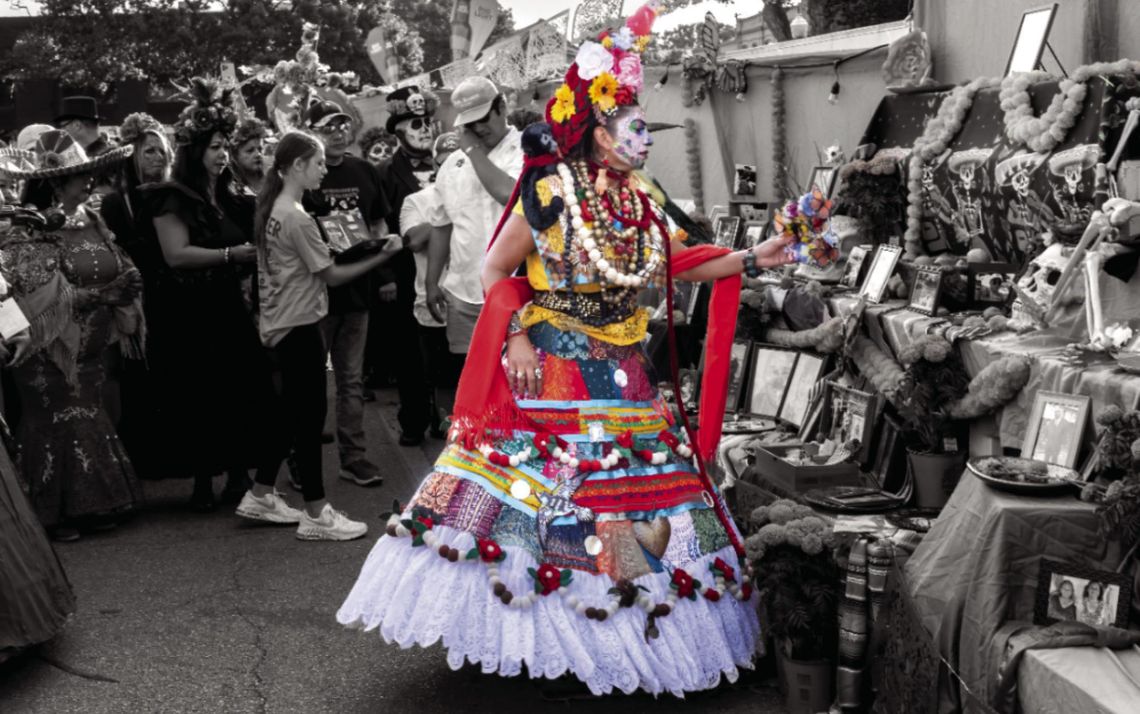Q. What is Día de los Muertos?
A. The Day of the Dead (el Día de los Muertos), is a Mexican holiday where families welcome back the souls of their deceased relatives for a brief reunion that includes food, drink, and celebration. (History.com) People in Mexico started honoring the dead thousands of years ago. They knew that death brings new life and had special months to remember the spirits of loved ones. The Aztecs played instruments made of turtle shells, dried gourds and twigs carved into flutes. Today, the holiday combines old traditions with the Christian holidays of All Saints’ Day and All Soul’s Day. These Christian holidays also honor the dead. Day of the Dead is celebrated on Nov. 2. However, children who have died are sometimes remembered the day before. (Koestler- Grack) One important tradition of Día de los Muertos is the ofrendas, translated as “offerings” or “altars” that people create to hold candles, photos, food offerings and belongings of the dead. They are a way of welcoming the dead. Here in San Marcos, the library will have an ofrenda the week of Nov. 1 for the public. Everyone is invited to come and submit a memory of their loved one(s) in the memory box beside the ofrenda.
Another important tradition is to honor the dead by cleaning up their grave sites or tumbas and decorating for the holiday. A decoration that is popular, especially on the ofrendas, is papel picado (punched paper). These paper creations can be quite complex and are genuine works of art.
Food is, like at any festival, very important. Families will offer water and food to the spirits and bread of the dead is a common offering. Pan de Muertos, or bread of the dead, is a sweet bread decorated with bone shapes or in the shape of coffins. Skulls or calaveras made with sugar molds — sugar skulls — are decorated and left at the ofrenda. Mole, especially mole tamales, is a favorite feast food. Mole is a type of sauce made with chiles, sour tomatoes (tomatillos) something sweet like dried fruit or sugar, unsweetened chocolate and spices. Families sometimes feast in the evening at the graveyards with picnics containing all the delicious food they have prepared, surrounded by candles and music.
Bells are rung to call spirits of the dead to the festivals while people burn incense and put flowers on the graves. Marigolds are often the flowers of choice because the Aztecs thought that orange was the sacred color of the land of the dead. Little toys in the shape of skeletons made of wood or paper called calacas are given to children who play with them in the graveyard. They are not spooky like Halloween toys, but silly and fun. Often, they are in the shape of little skeleton figures that are busy doing everyday things like playing guitars, driving shiny red trucks or even brides and grooms getting married. (Lowery) One thing we particularly like to celebrate here in San Marcos are the monarch butterflies that fly south to Mexico through town every autumn. Legends tell us that the monarchs are the spirits of children who have died — they are called Angelitos. (Lowery)
• History.com Editors. (2021, November 21). “Day of the dead (día de los muertos).” History. com. Retrieved Oct. 8, from history.com/topics/ halloween/day-ofthe- dead
• Koestler-Grack, R. A. (2018) “Day of the dead.” Bellwether Media.
• Lowery, L., & Knutson, B. (2013). “Day of the dead.” Millbrook Press.
Suzanne Sanders is the columnist for the library. She is the Community Services Manager for the San Marcos Public Library and came from the Austin Public Library in 2015 after having served there as a librarian for over 20 years. She gratefully accepts your questions for this column.







